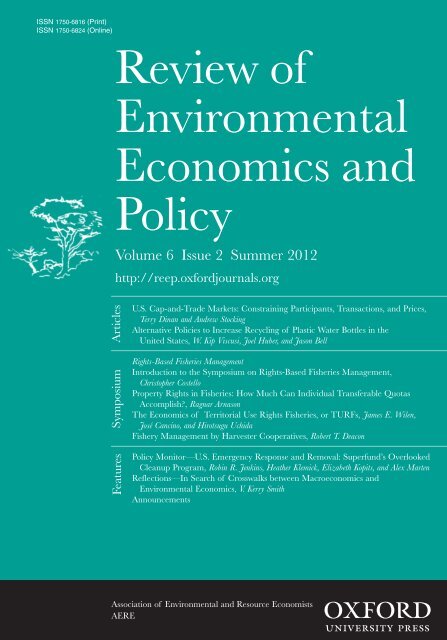美国生物燃料的经验教训:比较炒作与证据
IF 6.6
3区 经济学
Q1 ECONOMICS
引用次数: 13
摘要
自2007年以来,美国的生物燃料产量(主要来自玉米)增加了一倍多,这引发了人们对其对农业和燃料市场意外后果的担忧。为了检验这些关切的有效性,并为关于生物燃料及其影响的辩论提供信息,我们审查了生物燃料对土地使用、粮食和燃料价格以及温室气体排放影响的事前预测和事后证据。我们发现,生物燃料的扩张导致了农产品价格的最初大幅上涨,但随着作物生产力的提高和种植模式的改变,这些影响已经随着时间的推移而消失。对间接土地利用变化和生物燃料相关温室气体排放强度的模拟估计也比早期水平大幅下降,这与事后证据一致。此外,生物燃料生产的增长导致化石燃料价格小幅下降,这意味着燃料反弹效应较小。总的来说,估计表明第一代玉米生物燃料的碳强度低于汽油。最后,边做边学、规模经济和技术进步使玉米生物燃料的竞争力越来越强,减少了对补贴和进口关税的需求。最后,我们讨论了从美国生物燃料经验中吸取的教训。本文章由计算机程序翻译,如有差异,请以英文原文为准。
Lessons Learned from US Experience with Biofuels: Comparing the Hype with the Evidence
Biofuel production in the United States, primarily from corn, has more than doubled since 2007, leading to concerns about its unintended consequences for agricultural and fuel markets. To examine the validity of these concerns and inform the debate about biofuels and their impacts, we review ex ante projections and ex post evidence of the effects of biofuels on land use, food and fuel prices, and greenhouse gas (GHG) emissions. We find that biofuels expansion contributed to an initial significant increase in agricultural commodity prices, but these impacts have dissipated over time as crop productivity has increased and cropping patterns have changed. Simulated estimates of indirect land use change and the related GHG emissions intensity of biofuels have also declined sharply from their early levels, which is consistent with ex post evidence. Additionally, growth in biofuel production caused a very modest reduction in fossil fuel prices, implying a small fuel rebound effect. Overall, estimates imply that first-generation biofuels from corn have a lower carbon intensity than gasoline. Finally, learning by doing, economies of scale, and technological improvements have made biofuels from corn increasingly competitive, reducing the need for subsidies and import tariffs. We conclude with a discussion of the lessons learned from the US biofuels experience.
求助全文
通过发布文献求助,成功后即可免费获取论文全文。
去求助
来源期刊
CiteScore
10.80
自引率
0.00%
发文量
25
期刊介绍:
The Review of Environmental Economics and Policy fills the gap between traditional academic journals and the general interest press by providing a widely accessible yet scholarly source for the latest thinking on environmental economics and related policy. The Review publishes symposia, articles, and regular features that contribute to one or more of the following goals: •to identify and synthesize lessons learned from recent and ongoing environmental economics research; •to provide economic analysis of environmental policy issues; •to promote the sharing of ideas and perspectives among the various sub-fields of environmental economics;

 求助内容:
求助内容: 应助结果提醒方式:
应助结果提醒方式:


